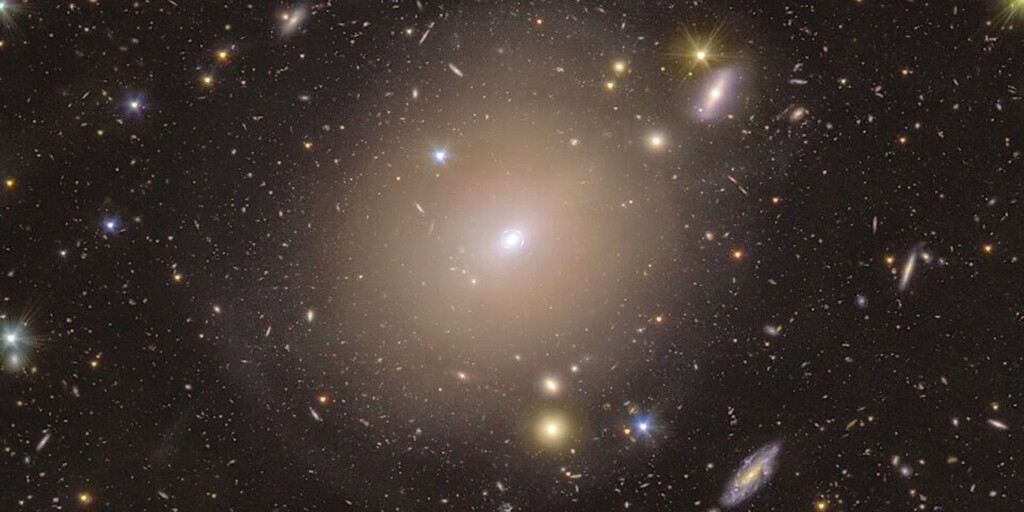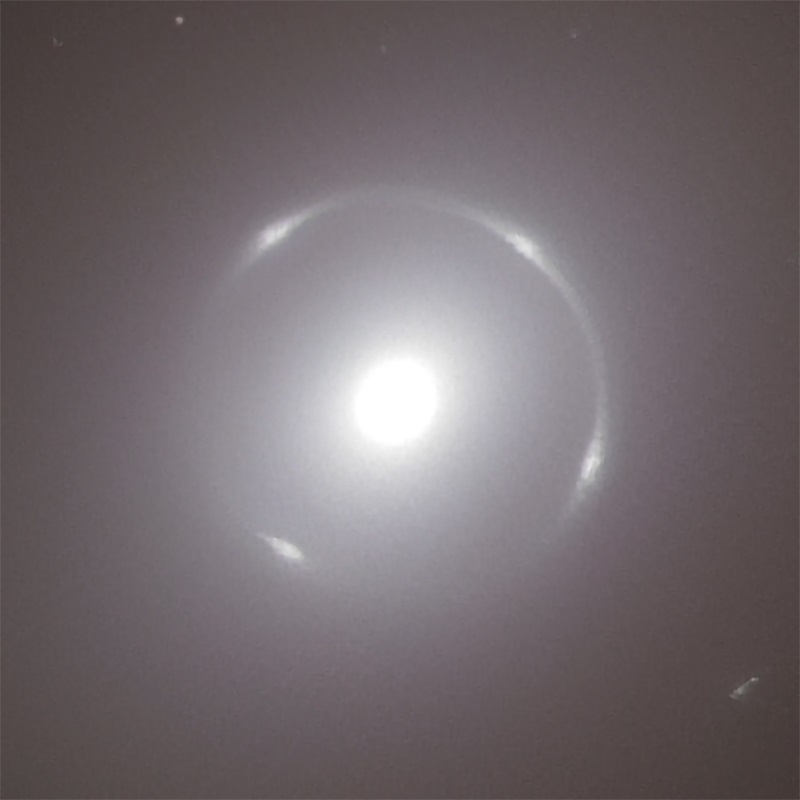Discovery of Stunning Einstein Ring by European Space Agency’s Euclid–the Dark Universe Detective

When parsing through images meant to test the camera on a new space telescope, scientists recently recognized a striking and rare phenomenon that had been perfectly captured by the craft.
A galaxy, shining in the distance, was tightly encircled by a halo of white light—also known as an Einstein Ring, and the result of gravitational lensing.

Euclid, named after the Ancient Greek mathematician, was launched into space by the European Space Agency in July 2023, and it began to test its camera systems in September.
In February 2024, Euclid began a survey that will map more than a third of the sky, observing billions of galaxies out to 10 billion light-years in order to create the most detailed 3D map of the universe ever assembled.
NASA has two spacecraft en route to launch for similar purposes, the SPHEREx broad surveyor, and the Nancy Grace Roman Space Telescope, a middle-ground surveyor between SPHEREx and the flagship observatories Hubble and James Webb.
These surveyor telescopes represent the astronomical science community’s desire to understand more about dark matter and dark energy—unseen forces that shape the positions of galaxies throughout the universe, and it only took a few months for Euclid to produce this amazing observation of their effects through space.
“I look at the data from Euclid as it comes in,” explains Euclid Archive Scientist Bruno Altieri. “Even from that first observation, I could see it, but after Euclid made more observations of the area, we could see a perfect Einstein ring. For me, with a lifelong interest in gravitational lensing, that was amazing.”
OTHER COOL SPACE DISCOVERIES: Tiny Planet Makes Big Splash as Surprise Study Shows it May Be Producing its Own Organic Compounds
Gravitational lensing was predicted by Einstein who stated that light would bend around large objects. In this image from Euclid, a galaxy called NGC 6505 shines with clear light from the center of space. Located 590 million light-years away, it is surrounded by the light from a second, very bright galaxy more than 4 billion light-years away.
As the light from the unnamed, older galaxy arrives at NGC 6505, it bends around and coalesces on the other side (as we see it) distorted. NGC 6505 actually behaves in this scenario like a magnifying glass, providing a much greater amount of light from the distant, unnamed galaxy, than we would be able to see imaging it directly.
MORE EXAMPLES OF GRAVITATIONAL LENSING: Beyond the ‘Dragon Arc’ Astronomers Unveil a Treasure Trove of Hidden Stars
“All strong lenses are special, because they’re so rare, and they’re incredibly useful scientifically,” said Conor O’Riordan, of the Max Planck Institute for Astrophysics, Germany, and lead author of the first scientific paper analyzing the ring. “This one is particularly special, because it’s so close to Earth and the alignment makes it very beautiful.”
The ESA press team writes that Einstein Rings are a rich laboratory for scientists. Studying their gravitational effects can help us learn about the expansion of the Universe, detect the effects of invisible dark matter and dark energy, and investigate the background source whose light is bent by dark matter in between us and the source.
SHARE This Cool Phenomenon And Research Field With Your Friends…
>read more at © GoodNews
Views: 1